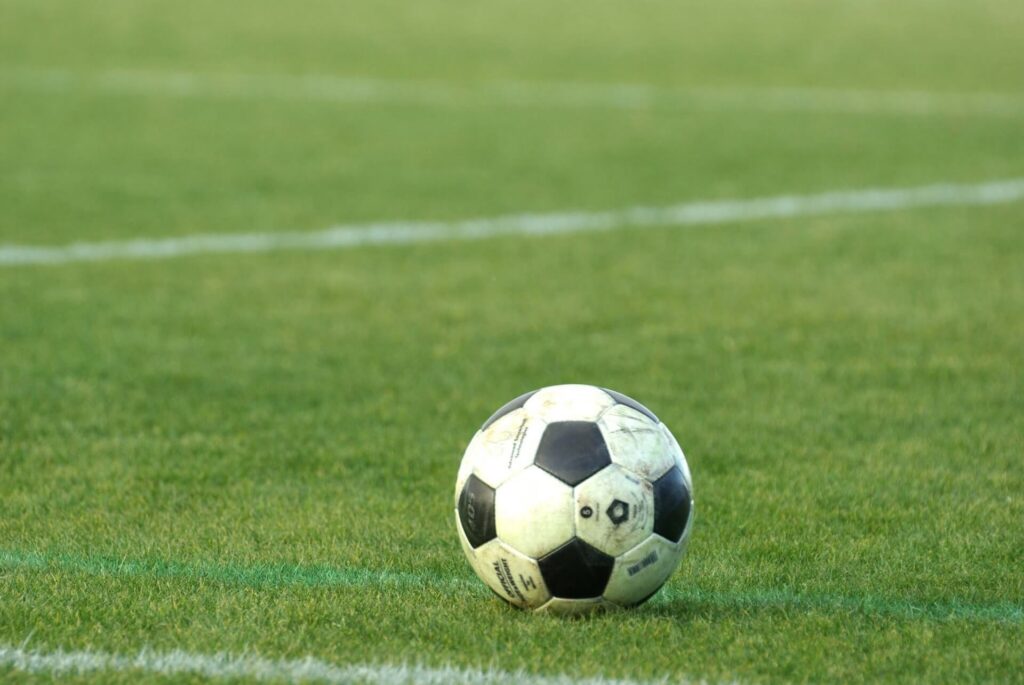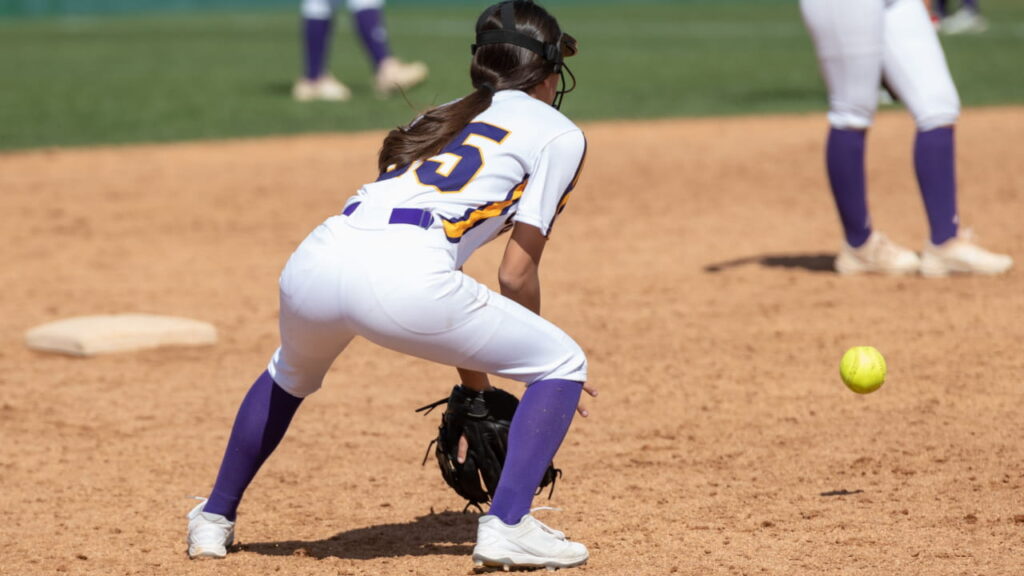
目次
- 1 basketball glossary
- 1.1 What is an arch?
- 1.2 What is early release (slip)?
- 1.3 What is early offense?
- 1.4 What is I-cut?
- 1.5 What is isolation?
- 1.6 What is out of bounds?
- 1.7 What is outside area?
- 1.8 What is an outside screen?
- 1.9 What is outside foot?
- 1.10 What is an outside foot turn?
- 1.11 What is an out number?
- 1.12 What is Outlet Pass?
- 1.13 What is assist?
- 1.14 What is agility?
- 1.15 What is Up & Under?
- 1.16 What is Around to the Goal?
- 1.17 What is an alley-oop?
- 1.18 What is an unsportsmanlike foul?
- 1.19 What is an underhand pass?
- 1.20 What is illegal screen?
- 1.21 What is inside area?
- 1.22 What is inside screen?
- 1.23 What is inside foot?
- 1.24 What is intercept?
- 1.25 What is Weave?
- 1.26 What is Explosion?
- 1.27 What is end line?
- 1.28 What is overshift?
- 1.29 What is overtime?
- 1.30 What is an overhead pass?
- 1.31 What is open stance?
- 1.32 What is offensive rebound?
- 1.33 What is curl cut?
- 1.34 What is one leg jump?
- 1.35 What is a cut?
- 1.36 What is a cutout?
- 1.37 What is cut-in?
- 1.38 What is kickball?
- 1.39 What is give and go?
- 1.40 What is a catch?
- 1.41 What is a gap?
- 1.42 What is gallop?
- 1.43 What is Quick Pass?
- 1.44 What is clear?
- 1.45 What is a closeout?
- 1.46 What is closed stance?
- 1.47 What is cross step?
- 1.48 What is a corner?
- 1.49 What is the finish line?
- 1.50 What is controlled dribbling?
- 1.51 What is conversion?
- 1.52 What is the 5 second rule?
- 1.53 side arm pass
- 1.54 side step
- 1.55 sticker
- 1.56 Shut the Gate
- 1.57 shuffle
- 1.58 shuttle run
- 1.59 jab step
- 1.60 jump stop
- 1.61 jump ball
- 1.62 shooting balance
- 1.63 shoot
- 1.64 shoot selection
- 1.65 shoot block
- 1.66 short corner
- 1.67 shot range
- 1.68 shoulder pass
- 1.69 cylinder
- 1.70 cylinder
- 1.71 switch up
- 1.72 swing path
- 1.73 skip pass
- 1.74 square up
- 1.75 square stance
- 1.76 screen away
- 1.77 screen play
- 1.78 screener
- 1.79 scrimmage
- 1.80 stack
- 1.81 stutter
- 1.82 steel
- 1.83 stick
- 1.84 step back
- 1.85 straight cut
- 1.86 stretch the trap
- 1.87 snap
- 1.88 speed dribbling
- 1.89 spin
- 1.90 spin turn
- 1.91 spin move
- 1.92 spanish league acb
- 1.93 sliding
- 1.94 Slide Through (The Screen)
- 1.95 three quarters
- 1.96 safety
- 1.97 restricted area
- 1.98 center player
- 1.99 zone defense
- 1.100 target hand
- 1.101 turn
- 1.102 turnover
- 1.103 tap shoot
- 1.104 double team
- 1.105 chest pass
- 1.106 check & go
- 1.107 Change of Speed (Pace)
- 1.108 change of direction
- 1.109 charging
- 1.110 tip
- 1.111 Dinai
- 1.112 defensive rebound
- 1.113 take charge
- 1.114 dodging
- 1.115 top of the key
- 1.116 drive
- 1.117 drive to the goal
- 1.118 trap
- 1.119 transition
- 1.120 triple threat
- 1.121 trace
- 1.122 drop step
- 1.123 no mark
- 1.124 no motion pass
- 1.125 no look pass
- 1.126 violation
- 1.127 bounce pass
- 1.128 Pass and cut (run)
- 1.129 Pass line (pass course)
- 1.130 pattern offense
- 1.131 back shoot
- 1.132 back step (backward)
- 1.133 back running
- 1.134 passing down
- 1.135 harry buck
- 1.136 power dribbling
- 1.137 hands up
- 1.138 handoff pass
- 1.139 vision
- 1.140 pick and roll
- 1.141 pickup games
- 1.142 Behind the back pass
- 1.143 pivot foot
- 1.144 Fast break (quick break)
- 1.145 foul line
- 1.146 fight over
- 1.147 feed
- 1.148 V cut
- 1.149 fadeaway shoot
- 1.150 fake & go
- 1.151 face guard
- 1.152 follow through
- 1.153 forward step
- 1.154 hook shoot
- 1.155 hook pass
- 1.156 push pass
- 1.157 flash
- 1.158 Brush (brushing)
- 1.159 free throw
- 1.160 flip
- 1.161 flare
- 1.162 press defense
- 1.163 floor balance
- 1.164 block out
- 1.165 front turn
- 1.166 Penetrate
- 1.167 ball keep
- 1.168 ball side
- 1.169 hold
- 1.170 ball man
- 1.171 ball line
- 1.172 pointing
- 1.173 point guard
- 1.174 boxer’s stance
- 1.175 position number
- 1.176 post up
- 1.177 pop out
- 1.178 body check
- 1.179 pump fake
- 1.180 mark
- 1.181 marksman
- 1.182 mike shashavsky
- 1.183 match up
- 1.184 match up zone
- 1.185 meat
- 1.186 mismatch
- 1.187 middle post
- 1.188 middle line
- 1.189 middle lane
- 1.190 moving receive
- 1.191 motion offense
- 1.192 user
- 1.193 lateral screen
- 1.194 running score
- 1.195 running steps
- 1.196 reach
- 1.197 lead pass
- 1.198 lead foot
- 1.199 lead man
- 1.200 recovery
- 1.201 reverse
- 1.202 rebound
- 1.203 rebound triangle
- 1.204 rebound balance
- 1.205 loose ball
- 1.206 lookup
- 1.207 layback shoot
- 1.208 receive foot
- 1.209 leg through dribble
- 1.210 rotation
- 1.211 roll
- 1.212 locker
- 1.213 rocker step
- 1.214 lock in
- 1.215 one two step
- 1.216 One pass location
- 2 At the end
basketball glossary

Attack with everyone, defend with everyone!
Chasing the ball on the court sweating, running, jumping…
Basketball requires a lot of physical strength, but it is full of speed and power.
It’s a very interesting sport that excites both players and spectators.
However, if you live in an area where there is no professional basketball league or if you are new to basketball,
You may be thinking, “I kind of understand the rules, but I don’t know what is illegal.”
This page explains basic basketball terminology.
If you are interested in basketball, please check it out!
What is an arch?
In basketball, it refers to the trajectory of the ball when taking a shot.
A good shooter has a beautiful arch!
What is early release (slip)?
one of the screen plays
The screener pretends to set a screen on the ball carrier’s defense, then immediately cuts toward the goal.
A play in which the player in possession of the ball pretends to use a screen and passes the ball to a cut offensive player.
What is early offense?
An attack that attacks early when the opponent’s defense is not fully prepared.
An attack that is slightly slower than an early break (fast attack)
What is I-cut?
One of the movements for receiving the ball
To return the ball by turning towards the goal and then returning to the original position.
The name derives from its movement resembling the letter I.
What is isolation?
Create space to make it easier for teammates to play
Let’s act for the team to win, not for our own performance!
What is out of bounds?
the ball going outside the court
If an out-of-bounds violation is committed, the ball moves to the opponent’s side.
What is outside area?
An area far from the goal
Generally refers to the area around the 3P line (outside of the trapezoid)
What is an outside screen?
a type of screenplay
Run past the player with the ball and hit his own defense, then receive the handoff pass and attack.
What is outside foot?
Refers to the foot farthest from the goal or the outside foot.
Basketball is a sport where footwork is also important!
What is an outside foot turn?
A change of direction centered on the outside
By the way, changing direction around the inside is called an inside foot turn.
What is an out number?
Refers to a situation in which there are more offensive players than defensive players in the attack area.
Be careful of the counter!
What is Outlet Pass?
Refers to the first pass after a defensive rebound.
What is assist?
Refers to the pass before deciding the game.
If you give a good assist, your goal scoring rate will increase!
What is agility?
Refers to the speed at which actions can be switched.
Play with high agility and leave your opponent’s DF behind!
What is Up & Under?
Pretend to shoot by pivoting with one foot and stepping with the other foot (pump fake)
When the defense jumps to check the shot, use a crossover or back turn to quickly step in and shoot toward the goal.
What is Around to the Goal?
A move in which a player pretends to make a handoff pass to a teammate and then cuts into the goal himself.
Let’s confuse the opponent’s defense!
What is an alley-oop?
A play in which a player grabs a ball thrown near the hoop in the air and dunks it.
One of the coolest plays in basketball
What is an unsportsmanlike foul?
intentional physical contact
What is an underhand pass?
A pass in which the ball is released from below
What is illegal screen?
Unreasonably using your body to obstruct the movement of a player who is not in possession of the ball
What is inside area?
An area relatively close to the goal where you can aim for a shot if you have the ball.
What is inside screen?
A play in which an offensive player sets a screen on the player who has the ball.
What is inside foot?
The inside foot, or the foot closest to the goal.
What is intercept?
To steal a pass from the opposing team. Also called steel
Let’s move on to attack as soon as we can intercept!
What is Weave?
A movement in which dribbling screens are performed consecutively.
What is Explosion?
one of the screen plays
A play in which the ball carrier quickly drives in the opposite direction of the screen while the defense is distracted by the screen.
What is end line?
line behind the goal
What is overshift?
A defense in which the player marking the ball carrier intentionally moves away from the goal line and forces the ball carrier to one side.
What is overtime?
In basketball, overtime refers to an extended period.
What is an overhead pass?
A pass in which the ball is released from above the head.
It can be used both when passing a pass to a teammate who is far away, and when passing a pass to a teammate who is close.
What is open stance?
A stance with the body facing the direction where both the ballman and marksman can be seen.
What is offensive rebound?
When the offensive side takes a rebound, it is called an offensive rebound.
Teams that are good at grabbing offensive rebounds are strong because they can actively take shots!
What is curl cut?
Ball side cut that wraps around the screener
What is one leg jump?
How to jump for layup shots and running rebounds
A basic basketball jump that takes a strong upward step on the second step. Practice hard and fly high
What is a cut?
A general term for the movements of offensive players. In basketball, moving from one place to another is called a cut.
There are also terms such as V-cut and cut-in that indicate the locus of the cut or the direction of movement.
What is a cutout?
A cut toward the outside (movement during offense)
What is cut-in?
A cut toward the inside (movement during offense)
What is kickball?
A foul act in which a player intentionally uses his foot against the ball.
What is give and go?
The movement of cutting (moving) after making a pass
Synonymous with pass and run
What is a catch?
catching the ball with one’s hands
What is a gap?
Between defenders in zone defense
What is gallop?
Movement that increases foot movement
What is Quick Pass?
A pass in which the ball is held for a short time from receiving it to passing it to a teammate.
What is clear?
to make room
What is a closeout?
A movement in which a defender closes the distance to an offensive player.
Let’s close out quickly!
What is closed stance?
Turn your body in the direction of the person you are protecting, and focus on that opponent’s movements. Bring one hand close to the other person, making sure not to lose sight of the other person’s position. Raise your other hand toward the pass course.
What is cross step?
An example of defensive footwork. This step is used when it is difficult to respond to offensive movements with a slide step, or when it is necessary to intercept a large pass. Unlike regular running, it is more like a “trot”, but the upper body needs to move forward while carefully adjusting in order to steal the ball, which is why it is different from regular running.
What is a corner?
The corner where the side line and end line intersect, which is the edge of the court.
What is the finish line?
An imaginary line directly connecting the offensive player to the goal
I wish I could go in a straight line…
What is controlled dribbling?
The action of continuing to dribble while facing the defense and protecting the ball.
Let’s adjust the speed depending on the distance to the opponent.
What is conversion?
A term that refers to switching from offense to defense, or from defense to offense.
What is the 5 second rule?
The 5-second rule states that a throw-in must be taken within 5 seconds.
Or the rule that says you can’t hold the ball for more than 5 seconds without passing or dribbling.
You should memorize the time of 5 seconds with your body!
side arm pass
A technique used to pass the ball from a side angle while evading the opponent’s defense in order to counter pressure from the defense.
side step
A method of moving the legs when moving laterally, without crossing the legs.
Especially when facing a defense, it is often used to evade the opponent while moving quickly.
Be agile in a basketball game
sticker
The act of restricting the actions of another person. A play in which an offensive player sticks close to a defender and uses his back and arms to restrict the opponent’s movement, especially against a defender who is trying to block a pass. If you are a defender, use double teams to block the movement of offensive players.
Shut the Gate
The act of moving away from a floating or denying position and clearly standing in the way of an offensive player who is attempting a drive, thereby restraining the player from driving in.
shuffle
① A tactic that involves alternating the attacking side. ②The form of a slippery step.
shuttle run
Divide the court into quarters or halves and practice sprinting back and forth. This training is aimed at improving footwork and includes various variations such as turns and back runs.
jab step
A technique of taking small steps with the lead foot during a one-on-one attack to see how the defender reacts. It is used as a fake before dribbling.
jump stop
A technique that involves catching a ball in the air while making a large jump and landing with both feet at the same time.
Try to land without hurting your feet!
jump ball
At the start of the game, the ball is tossed in the center circle, and players compete by jumping on it.
shooting balance
A situation in which five players are given equal shooting freedom. A good shooter is expected to have a high degree of freedom.
shoot
To shoot the ball aiming at the goal (ring). In the United States, it is also called a “shot.”
If you can’t make a shot in practice, you can’t make a shot in a game. Make sure to practice basic shooting on a daily basis.
shoot selection
Deciding whether or not to take a shot by considering the surrounding conditions. Appropriate shot selection leads to shots with a high probability of scoring points.
Quick decisions lead to good plays!
shoot block
A play in which the defense prevents the opponent from scoring by knocking down a shot. This is a play that requires caution as it can easily result in a foul, but it would be cool if you could block it!
short corner
The corner of the court outside the restricted area consisting of the end lines and free throw lane.
shot range
The distance of a shot that a player can comfortably make.
It is desirable to have a wide shot range, but if you are new to basketball, you can easily increase the distance.
shoulder pass
A pass used when throwing a long-distance pass with one hand.
cylinder
The space directly above a player when they are in basketball position. By definition, it is limited by the palm of the hand when the hand is raised, the vertical plane of the buttocks, and the vertical plane of the legs and feet.
cylinder
Playing with your legs spread on the court
switch up
Defense tactics against screens
A defensive method in which the defense side makes the first move, the screener defender takes over as the ball holder, and then launches an attack and drives in.
swing path
A pass that crosses the court.
skip pass
A pass that jumps over the adjacent player and sends it to the player on the other side.
square up
Directly facing the goal when you have the ball.
square stance
One of the defensive stances. In addition to the basic stance, a stance where you lower your center of gravity slightly and face your opponent directly.
screen away
As part of a screen play, a play in which the passing player sets a screen for an offensive player on the opposite side of the pass to create an opportunity.
screen play
A play in which two or more offensive players obstruct the movement of the defense and create an opportunity for attack.
Screen play has two roles: the screener uses the screen to stop the defense from moving, and the user uses the screen to create chances.
Screens are a basic tactic in basketball.
screener
In screen play, a player who provides a screen to a teammate.
The screener may not be noticeable, but it plays a very important role, so be sure to pay close attention to it when watching basketball games.
scrimmage
An American football term that refers to the play from the time the ball is snapped until it becomes dead.
In basketball, this word is sometimes used when playing games such as one round trip or two round trip. This also includes intra-team practice games.
stack
A screen play involving two offensive players in close contact with the free throw lane at the low or high post.
After the user passes, one person moves outside, creating an open shooting opportunity.
stutter
This refers to the movement of the feet, in which the left and right feet are switched in a fine, flapping manner.
Also known as “footfire” or “herkey”.
steel
To steal the ball from the opposing team’s dribbler.
A synonym is “intercept”.
Be careful of fouls when stealing.
stick
This refers to a movement in which the defense closely follows the offense and raises both hands to apply pressure.
It is used when defending with a double team or covering an offense that has stopped dribbling.
step back
As part of the offensive rebounding technique, when the defense blocks out with all of its weight, instead of pushing back, the player takes a step back and moves forward the moment the defense loses its balance.
A play in which he takes a large step backwards while dribbling, creates space with the defense, and then takes a jump shot.
straight cut
①An offensive rebounding technique, in which you use your arms and legs to quickly get in front of the offense and secure an advantageous position before being blocked out by the defense.
②A type of pass and run play, which refers to a play in which the player cuts in front of his own defense towards the goal after passing.
stretch the trap
This is an effective play when the ballman is double-teamed by two defenders, one who is marking the screener and the other who is marking the user, during a screen play.
The double-teamed ballman uses a retreat dribble to step back and pass to an unmarked teammate to create a chance.
snap
This refers to the movement of checking the ball in a straight line when the ball holder holds the ball in front of their stomach, or at the moment they are about to shoot, pass, or dribble.
Check quickly! is the golden rule of basketball.
speed dribbling
A dribbling technique used to quickly drive towards the goal when free and not close to the defense, or to carry the ball during a fast break.
Basketball beginners should be able to dribble while sprinting.
spin
Refers to the rotation given to the ball.
The snap action, which applies force to the lower half of the ball, imparts reverse spin (reverse rotation) to the ball, creating a horizontal axis of rotation, which improves the stability of the ball in its forward direction.
spin turn
If you are blocked by the defense during an offensive rebound, this refers to the action of keeping your body close to the defense’s back and turning back to get in front of the defense.
spin move
When the defense puts pressure on you from behind, raise your upper body and take the pressure with your left and right shoulder blades.
Refers to a play in which the player uses the corresponding foot to quickly drive in the direction of the pressure and aim for a goal.
spanish league acb
ACB (Asociacion de Clubs de Baloncesto) is a division of Spain’s professional basketball league. FIBA rules are adopted, and 18 teams participate in the first division.
sliding
The act of diving towards the ball in order to steal it.
Slide Through (The Screen)
This is a defensive method against screen play, and refers to a defense in which the user’s defense slips between the screener and the screener’s defense.
The mark target remains unchanged.
three quarters
Refers to the three-quarters area when the court is divided into four by the half line and the two free throw lines.
When giving defensive tactical instructions, it is sometimes used in the same way as “all-court man-to-man” or “half-court man-to-man.”
safety
Prepare in advance to prevent a first break by your opponent when transitioning to defense.
restricted area
Restricted area refers to the area bounded by the end lines and free throw line.
Specifically, the boundary is formed by two lines connecting points 3m on either side of the center of the end line and free throw line, and is generally called a trapezoid.
End lines are excluded from this definition.
Each line indicating a restricted area is contained within the area, and if a player is within the restricted area, he or she is not considered to have left the restricted area unless he or she steps both feet onto the floor outside the restricted area.
center player
A center player is primarily characterized by playing near the goal, and this position is usually occupied by the team’s tallest players.
In the past, players stood in the center of the court and played the role of receiving passes from the guards and relaying the ball to the forwards, which is why they were called “centers.”
zone defense
Zone defense is a type of area defense in which each player defines a specific area that he or she must defend and works with his teammates to defend it without giving the opponent freedom to play.
It is defended in the same way as the zone defense used in football (soccer).
target hand
A hand motion used by a player receiving a pass to indicate to the player in possession of the ball where to pass the ball (target).
turn
① To change direction
②Rotate around either leg. (Front turn, reverse turn, back turn, etc.)
turnover
The attacking team loses possession of the ball due to a misplay or violation.
tap shoot
To shoot directly by tapping without receiving a rebound or pass.
double team
Two defenders working together to protect the ball holder
chest pass
This is the most basic path and the most frequently used in the game.
Hold the ball in front of your chest, squeeze your arms together, and use the snap of your wrists and fingertips to release a pass.
check & go
An action in which a defensive player instantly checks the course in the direction the offense is moving, quickly moves towards the goal, and jumps on the ball.
Change of Speed (Pace)
Making changes in movement and running speed.
This deceives the defense. The greater the strength of the change, the greater its effect.
Adjust your movements according to the situation to conserve your physical strength.
change of direction
To skillfully evade the defense by changing the direction of movement or running.
charging
The act of forcibly advancing and hitting or pushing an opponent’s torso, regardless of the presence or absence of the ball.
tip
Points to the two-pass position.
Dinai
The act of a defender blocking a passing lane (the expected path of a pass) to prevent the opponent from having possession of the ball.
defensive rebound
A team that has been playing defense up until now is able to grab a rebound.
Conversely, when the offensive team steals a rebound, it is called an offensive rebound.
take charge
A play in which the defense positions itself in advance in the direction of the offense and causes charging, which is an offensive foul.
You must anticipate your opponent’s movements and be careful not to move your feet when causing a foul.
dodging
This refers to a step that involves an agile dodge, and is not a large kick-like movement, but rather a slight change in direction by stepping slightly outward with the foot opposite to the direction in which the turn is being made (the outside foot).
top of the key
The trapezoid and free throw circle are likened to a keyhole, and the area corresponding to the top of the keyhole is indicated. Around the top of the semicircle of the free throw circle.
drive
Attack using dribbling.
drive to the goal
A screen play in which the ball carrier quickly advances toward the goal if the ball carrier’s defense fails to adequately respond to the screen.
trap
A defensive method that attempts to force the offense into a misplay by using traps set in advance.
transition
A transition situation from offense to defense or from defense to offense.
Switch smoothly between attack and defense
triple threat
It refers to a stance that allows you to immediately respond to shooting, passing, and dribbling, and is also called a “three-threat stance.”
For the defense, this feature makes it difficult to predict the next movement of the player in possession of the ball.
trace
When defending, when approaching the ball holder, this technique uses both hands to apply pressure on the ball, always following the movement of the ball.
drop step
This is a step in which the lead foot is pulled back, and is a technique mainly used for inside plays.
no mark
Offense is not marked by defense
When defending, make sure to follow the mark and make sure there are no offensive players left unmarked.
no motion pass
A pass that requires very few preliminary movements. It’s difficult, but it has the advantage of being difficult to cut by the defense.
no look pass
A pass that the passer performs without looking at the person or location he is throwing the ball to.
It is a difficult technique that basketball beginners often fail at, although it is commonly used by professionals.
violation
Violation refers to a violation of the rules for game progression, rules governing and restricting play content, area, time, etc.
When a violation is called as a penalty, the opposing team is given the opportunity to take a throw-in, and the game is restarted with a throw-in.
bounce pass
A pass that bounces the ball off the floor into a pass course where there is a defense.
The reason for bouncing the ball on the floor is to prevent the defense from catching the ball. It’s a basic pass in basketball, so let’s practice hard.
Pass and cut (run)
A play in which the player in possession of the ball passes the ball to a teammate, evades a defender, and receives the ball again.
This is also commonly referred to as “give and go.”
Pass line (pass course)
An imaginary line connecting the ball holder and a player other than the ball holder.
When defending, be aware of your opponent’s pass line.
pattern offense
An attack method in which players position and move according to a predetermined basic pattern in order to score points.
back shoot
A shot taken by passing under the goal while dribbling along the end line.
By applying spin to the ball with your wrists and fingertips, it becomes easier to take shots.
back step (backward)
A step that goes backwards.
back running
to run backwards. Used when returning to defense or when defending against an outnumbered player.
passing down
A play in which the player moves forward while keeping the ball by passing without dribbling.
harry buck
When the offensive team switches to defense, it refers to the act of quickly returning to the basket that the own team is defending and preparing to defend.
Attack and defend quickly!
power dribbling
A dribble performed inside near the goal while securing a position while opposing the defense.
hands up
The action of constantly raising the hand in a high position to put pressure on the ball carrier.
handoff pass
A hand-to-hand pass when allies pass each other in close proximity.
Make sure you can work together smoothly with your teammates during practice.
vision
Refers to the player’s field of view. In a defensive situation, it is important to maintain a wide field of vision, including the movement of the ball, while sensing the positions and movements of allies and enemies.
pick and roll
In a screen play, when the defense attempts a switch, the player rolls in front of the defense after applying the screen, creating a chance.
pickup games
A style of game where members are recruited before the game begins and are divided into allies and enemies.
To check the results of practice, it is often performed in half court, such as 4 on 4 or 3 on 3.
This term is also sometimes used when a group of unknown friends gather to play, such as in a basketball ring at a park.
Behind the back pass
Refers to a pass from behind that is effective when the defense is under pressure, the path is blocked, or it is difficult to pass from the front.
pivot foot
The pivot point when pivoting.
Fast break (quick break)
Refers to a quick, all-court attack in which a team gains possession of the ball.
Usually known as a “fast attack,” this attack is intended to attack quickly when the defense is not yet ready.
If the first attack is not successful, the attack that deploys the ball to the subsequent player (trailer) is called a “secondary break”.
In contrast to this secondary break, the first attack is called the “primary break.”
Once the defense is in place, we usually switch to a set offense.
foul line
Similar to the free throw line, it refers to an imaginary line that extends from the free throw line to the sideline.
fight over
A form of defense against a screen play, in which the cutter’s defender cuts between the screener and the cutter to avoid the screen.
The marksman relationship remains the same. A synonym is “over the top.”
feed
Pass to a teammate who is in a position to attack immediately.
V cut
One of the methods of ball meat
It is called this because when a wing player moves toward the goal and then moves toward the ball when the ball is at the top, the movement resembles the letter “V”.
fadeaway shoot
A derivative of the jump shot, this is a shot performed by jumping backwards and arching the upper body to avoid a block from the defense.
fake & go
Part of offensive rebounding techniques, a play where you fake to the left or right to guide the defense, then react to it by moving in the opposite direction to get in front of the defense.
Agility is important for fake technology! Use your footwork well
face guard
This is a defensive tactic in which the defender faces the markman without looking at the ball to prevent the offense from receiving a pass.
follow through
Refers to the movement of the hand after taking a shot and releasing the ball.
A good shooter has a good follow-through. When practicing shooting, be sure to keep follow-through in mind.
forward step
A step that you take in front of yourself.
hook shoot
This refers to a technique in which a player uses his body width and help hands to evade the defender and take a shot without being blocked, even though he is approached by the defender.
It is a shot taken from a position far away from the defense with the arm extended, and is considered to be a difficult shot for the defense to defend.
hook pass
When the defense is under pressure, this is a pass in which the player turns half his body, wraps his arm around his head, and throws the ball over his head.
push pass
A pass made to a teammate player who is not directly in front of him, but diagonally to the side, by pushing the ball out with his hand on that side.
flash
Refers to the movement of suddenly jumping out (diving) to catch the ball.
Brush (brushing)
In screen play, refers to the play when the user passes near the screener. It is important to get through the last minute course with minimal contact with the screener.
free throw
Part of the penalty for fouls is when a foul is committed while the offense is in a shooting motion.
Two free throws are awarded for a 2-point shot, and three free throws are awarded for a 3-point shot, and if the shot is made without interference from the opponent, the goal is worth one point.
Free throws can be mentally stressful. No matter what happens, keep your composure and shoot.
flip
The action of lightly flipping the ball using the snap of the wrist and fingers when shooting or passing.
flare
Refers to a play in which a player moves away from the ball and moves into an open space to receive a pass.
press defense
A defensive method that actively puts pressure on the offense, disrupts the rhythm of the attack, and steals the ball.
Used in man-to-man and zone defense.
This is a term also used in football (soccer).
floor balance
Refers to the balance of the distance arrangement of the five players on the court during an offense.
block out
This refers to a play in which an offensive player aiming for a rebound uses his body to contain the opponent’s movements.
This is an important technique to secure defensive rebounds.
front turn
Refers to the movement of rotating the body in the front direction (toward the stomach). <Opposite word> Back turn
Penetrate
The act of an offensive player using dribbling to break through the defense and advance toward the goal.
Or pass the ball to a position where it is easy to break through the defense.
ball keep
This refers to when a post player with the ball holds the ball firmly under his chin while keeping his elbows tense to prevent the ball from being stolen by the defense.
If you hold the ball properly, your opponent will catch it. Be sure to keep the ball well.
ball side
1. When the court is vertically divided into two by the middle line connecting both goals, this refers to the side where the ball is located. This is also commonly referred to as the strong side.
<Antonyms> offside, weakside
2. Refers to the side between the player and the ball.
<Opposite word> blind side
hold
Refers to the way you support the ball when you are ready to take a shot.
ball man
Refers to the offensive player who has the ball.
ball line
The imaginary line connecting the offensive player and the goal is called the goal line.
pointing
While posting up, give a signal to the passer by pointing in the direction you want to receive the ball. The hand that extends in the direction you want the ball to go is also called the target hand.
point guard
Refers to the player who directs the team on the court.
boxer’s stance
Refers to the stance used when defending the ball holder who is dribbling. Take a stance with your legs slightly wider than the basic stance and your feet slightly shifted forward and backward.
position number
Numbers given to the five players on the court, used to represent their positions and roles.
For example, number 1 is point guard, number 2 is off guard (shooting guard), number 3 is small forward, number 4 is power forward, and number 5 is center.
post up
Refers to an offensive player taking up position in the post area with his back to a defender.
pop out
Refers to the sudden movement of jumping out to catch the ball.
body check
It refers to restraining the opponent’s movements with your body.
pump fake
It is a type of shooting play under the goal, and is a movement in which the player moves his body up and down like a pump from the stance of shooting to feint the defense. Avoid timing and aim for a safe shot.
mark
The act of a defender checking and defending an offensive player.
marksman
Refers to the opponent to protect (the opponent who is marked) during defense.
mike shashavsky
He is a highly regarded coach throughout the United States and recently coached the U.S. team to the world championships. He is normally the head coach at Duke University.
match up
A combination of players who correspond to each other in man-to-man defense. Or a combination of players from both teams for each position.
Changing the defensive response depending on the form and arrangement of the offense.
match up zone
A method of zone defense designed to change the zone according to the attack style of the offense and always protect the ballman man-to-man.
A combination defense that combines the advantages of zone and man-to-man play.
meat
When an offensive player receives a pass, he or she moves towards the ball before it reaches the ball.
mismatch
Disadvantageous situations arise due to differences in height, physique, etc. For example, when a short defender is placed against a tall offensive player.
middle post
The area around the dashed line in the post area. Between low post and high post.
middle line
An imaginary line connecting goals.
middle lane
The middle lane when the court is divided into three vertically.
moving receive
Performing a series of movements that includes receiving the ball and simultaneously performing a fake action.
motion offense
A form of free offense that uses screens, cuts, and passes depending on the defense. Player movement is emphasized.
user
A player who takes advantage of an ally’s screen (screener).
Teamwork is important in basketball! Thank you to our allies who are paving the way!
lateral screen
A screen created by moving the screener horizontally.
running score
The scoring situation changes as the match progresses. Refers to the points scored by field throws and the total points scored at that moment.
running steps
Defensive footwork performed while running, with the upper body facing the offensive player.
reach
It refers to the act of reaching, the reach of the hand, the distance an object can reach, and reaching the ball.
Same as reach used in boxing etc.
lead pass
A path sent to a location that a friendly player would be able to reach if they moved. Or a pass to lead a friendly player.
lead foot
A foot that can be moved freely, rather than a pivot foot, when stepping or turning. <Synonym> Free foot.
lead man
The player who is furthest toward the goal during a fast break.
recovery
After moving in Shut the Gate, quickly return to your defensive position once the goal is achieved.
reverse
to cut back in the opposite direction.
rebound
To catch a ball that falls from above after a shot misses.
Both offensive rebounds and defensive rebounds are important!
rebound triangle
Triangular positioning formed by three players to capture rebounds.
rebound balance
The position and spacing of players on the court to efficiently capture rebounds.
Form a rebound triangle and position the player and safety man on the free throw line for a long rebound.
loose ball
The ball is not in possession of either team. Loose balls are the most common rebound balls after a shot.
Same as a loose ball in football (soccer)
lookup
In basketball, always keep your head up and keep your eyes on the ball and the marksman. It is important to make this a habit.
layback shoot
A back shot, which refers to a shot made with the hand closest to the backboard while rotating the body after passing the goal.
receive foot
The foot that lands first when receiving the ball. This foot is generally the pivot foot.
leg through dribble
A technique in which the ball bounces between the legs and changes direction while dribbling.
rotation
Changing positions in order to fill in the empty spaces created by the movement of friendly players.
roll
Performing a back turn to wrap your opponent around on your back.
locker
The action of rocking the body back and forth from side to side. It also involves shifting your weight onto the other foot without completely lifting the foot off the floor.
rocker step
A fake step that involves an up-and-down movement similar to a rocking chair.
Put your foot out in the direction you want to pass the defender, make the defender move back, pretend to put your foot back, and pull only your upper body.
The defender was drawn to his movement and tried to close the gap, but he passed him.
This kind of movement is also called rocker motion.
lock in
When you have possession of the ball, keep your elbows up and keep the ball under your chin to prevent your opponent from stealing it.
one two step
A step with a 1,2 rhythm (double beat). <synonym> stride step
One pass location
The position of the first offensive player, counting from the ballman.
At the end

How did you like the basketball glossary?
Although it looks like a simple sport, there are more terms used in basketball than in other sports.
It is a sport that you can have a lot of fun watching once you understand the rules and terminology.
If you want to get into basketball from now on, please review this page if you come across a term you don’t understand.
Return to the top of the glossary





